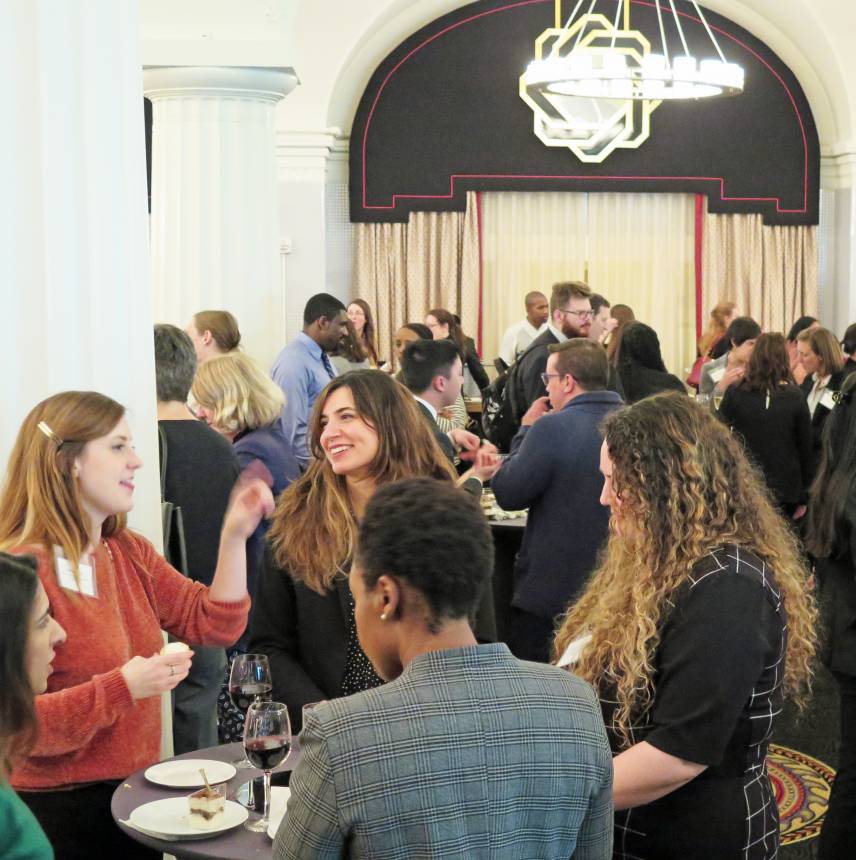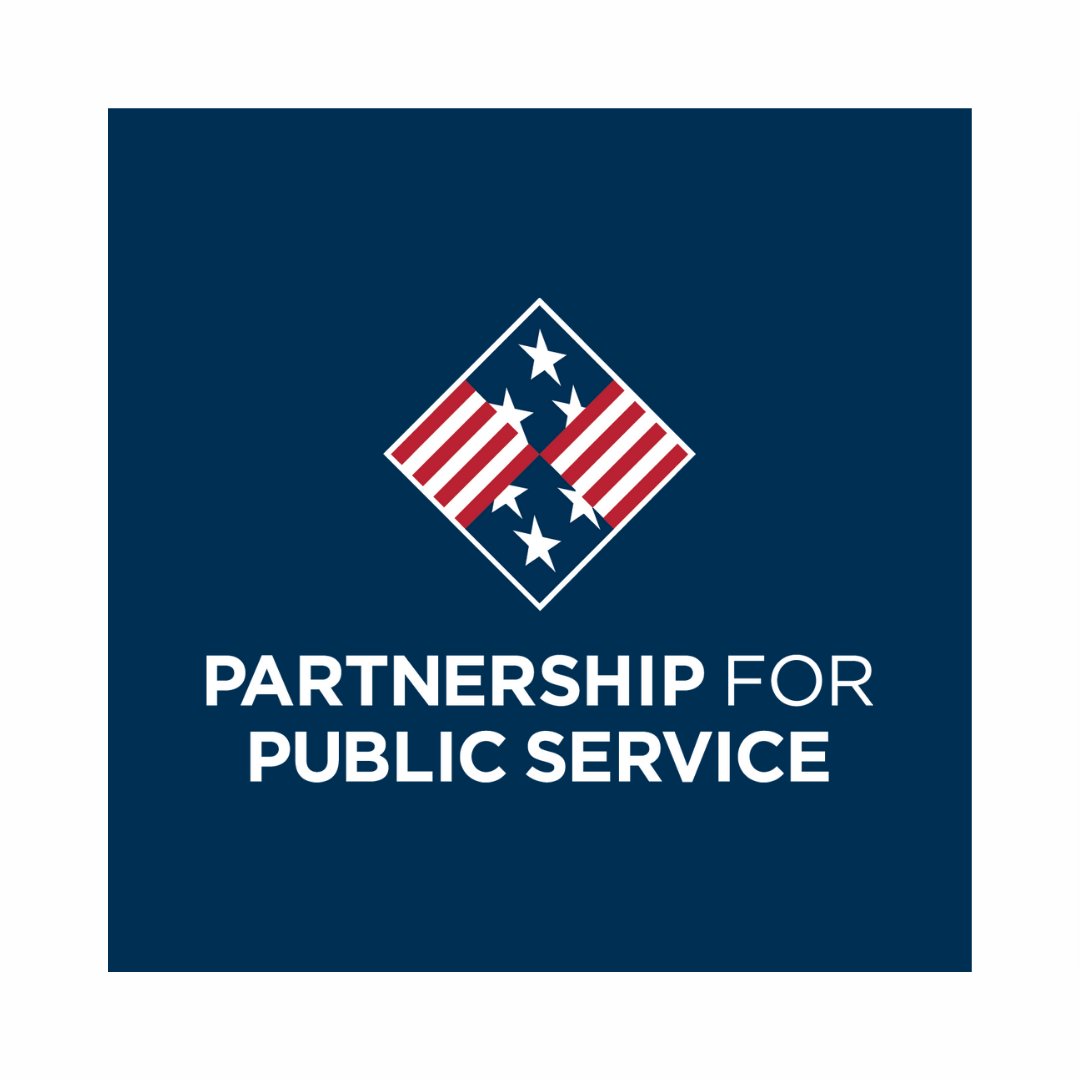



The federal landscape is expected to change dramatically in the next decade as the power and capacity of technology advance, more data becomes available and the demands on federal employees grow and shift. With the U.S. population projected to expand by more than 20 million people in the next 10 years, according to the U.S. Census Bureau, government must evolve to keep up.
In “A Roadmap to the Future,” the Partnership for Public Service and Ernst & Young describe what a better connected, more collaborative federal government can accomplish in the years ahead and identify barriers to success that government is likely to encounter along the way.

Is the evidence-based policymaking movement at the federal level of government on the cusp of an important change? It’s too soon to say for sure, but hopefully so.
The change would expand the questions that currently drive the evidence movement, such as Does this program work? and Which version of this program works best? to include questions like What does this program cost? Is this program cost-effective? and Which version of this program is most cost-effective?
That may seem like a subtle change, but providing decision makers with information on costs and cost-effectiveness, not just on how well they produce desired outcomes, would give them valuable new information to identify the programs and policies with the highest return on investment. In practical terms, that would allow them to spend scarce government resources more wisely and better achieve the goals of public programs.
Federal employees that leave for the private sector or academia to gain more experience may have an easier time returning to government jobs, under a rule proposed by the Office of Personnel Management Dec. 26.
The rule would enable returning employees to enter back into a government job without competition at a higher level than when they left, if they have gained the experience and skills to warrant such a higher position.
Under current regulation, a returning federal employee can be reinstated without competition only at a grade level that is no higher than the one they originally left.
“Oftentimes, when an individual leaves federal service, he or she acquires skills and/or experience that may qualify the individual for a position at a higher grade level than the one the individual held prior to leaving government,” the proposed rule states.

The Preparing to Lead program is a professional development opportunity for federal employees who are interested in pursuing a career in leadership at their agencies. Participants practice strategies to help them become more effective employees and develop critical leadership skills they will be able to use throughout their careers.
Through the course of this five-month program, participants will:
Robertson alumni can for our Professional Development Fund to help pay for this program.
The NextGen Book Club is a chance for public servants interested in developing their leadership skills to read, discuss and network with a group of like-minded peers. There are six books that will be read over the course of the year, and we will provide discussion questions and wrap up each book with a Facebook Live discussion.
Here’s what to expect for our first round of the book club! We’ll be reading Managing Up: How to Move Up, Win at Work, and Succeed With Any Type of Boss, by Mary Abbajay.
You’ll be emailed the reading discussions on the following dates:

Dr. Michael Schneider, RFG Fellows’ Career Adviser and Director of the Maxwell School of Syracuse University’s Washington Public Diplomacy Program, compiled the following overview of important resources from 2019 and trends for 2020 for our fellows and alumni. If you have questions or ideas for future columns by Dr. Schneider please email Communications Manager Lauren Hertel.
The PMF application process has been streamlined, but the jury is still out on the long-term functioning of this venerable search for talent for the USG. According to USG reports, there is an approximate match of PMF Finalists and available PMF slots — both approximately 400. In past years as many as 750 finalists competed for some 350 slots. The match is never perfect, but at least this time around the numbers are close. It is important for any graduating RFG Fellows to gain as much information as possible and aggressively market yourselves to agencies and departments of interest. Well before the April 22nd hiring event, it is important to learn about possible openings and participating agencies. See the PMF site or get contact information for agency coordinators.
PMF finalists should not wait for the fair. If it is possible to get a lead on possible slots of interest, do not wait. Follow up on any contacts is important, and check out other civil service possibilities with your federal agency contacts as well as what is posted on USAJobs. Sometimes you can gain valuable information and personal insights into jobs that might come open, even if not under the PMF banner.
Applications for Foreign Service Officers have dropped severely in the past two to three years. Applications reached a high of about 32,000 by 2015, but according to several media reports and corridor gossip at the Department of State, applications are down to about 8,000 currently. Absent systematic analysis, one can only speculate that a combination of factors is responsible for such a drastic falloff, such as a decline overall in interest in federal employment during good economic times.
Another explanation for the decline — and this is speculation also — might well result from the headline-grabbing political-policy contention between the administration and much of the media. To this writer, the decline cannot be attributed to our divided nation alone. I am guessing a complex of economic inducements for private sector and nongovernmental organization engagement have become more appealing to those considering applying to the Foreign Service as recent policy-political controversies intensify.
Nevertheless, for those RFG Fellows considering the Foreign Service, this is one of the best — if most challenging — opportunities in years to serve the nation. Some might be turned off by current policies, however the federal government is very large and complex; there are needs and possibilities for making a constructive difference — even as a junior official — in varied fields. Those who have lived through the tense times over the past half-century can attest to the need for committed public servants.
Family Leave Provisions have far-reaching potential. Assuming current legislation is approved by both bodies of the U.S. Congress and the President, pay increases for military officers and civilian employees of the federal government might slightly help ameliorate the lack of FSO applications.
More important might be the approval of 12 weeks paid family leave. This is a major breakthrough for “modern” approaches to work-life balance in the USG. Sponsors hope it will prove a test and example for private sector adoption in the future. If this comes to pass, and if the federal government continues to work on child care provisions for working families, in my view, federal employment will become significantly more appealing to Gen Z and beyond.
There are important demographic implications for American society as well, if the family leave and child care provisions are adopted widely. For many years, the U.S. overall fertility rate has lingered just about or slightly above the “replacement” rate of about 2.0 or 2.1 children per couple. This dry statistic is very important for our economic, social and cultural future. In contrast with most of Europe, Japan and Russia, whose populations are aging, the U.S. has benefited from maintaining our numbers and the relative proportion of younger people. The rising population is crucial to pay for social security, Medicare and for growing needs for workers and consumers.
Of course the positive fertility rate in the U.S. relies on immigration. If the number of “new Americans” falls off, the nation will face economic challenges that cannot by fixed through new technologies alone.
A pending reform responds to another long-term, seemingly intractable drawback to federal employment. In the pilot phase the proposed change would allow applicants to submit a two-page general resume, much like most everyone uses in the nongovernmental organization and business world. Current federal applications range from five to 60 pages! The premium is on listing as many career accomplishments as possible and filling in a self-assessment of one’s competencies, on a scale of one to five.
Part of this reform would require government hiring managers’ consultation with experts early in the application process for any position. The experts will advise on the suitability of applications, replacing the “self-assessments inflation” that has occurred. Applicants invariably rate themselves more highly than the facts of their resumes reveal. This has resulted in much larger pools of applicants to be reviewed. Agencies encounter greater difficulty processing and evaluating the applications. The new approach will help expedite the hiring process.
Another proposal is far more controversial. A second reform, The Modern Employment Reform, Improvement and Transformation (MERIT) Act would allow the federal government more flexibility for speedier dismissal of non-performers. This is the latest attempt of a decades-long efforts to change one of the fundamentals of federal employment and to move toward much greater ability of federal managers to remove underperforming civil servants. Federal unions have strongly opposed the principle and process. With a divided Congress, the legislation is not likely to gain any traction.
The 2019 report on the best places to work in the USG has just been published. A quick analysis doesn’t provide any simple answer to the rankings. They cannot be explained by salary or benefits. While NASA has been on top for several years, HHS has been close, and the two agencies are very different. Policy disputes do not explain the list, nor do domestic/international or small/large divides. Perhaps there is something to the concept of an “institutional culture” or “leadership culture” that pervades each.
If you’re interested in specificity and have the time to search the best of the best — check the long ranking list of “Agency subcomponents” — individual offices within the USG. This will certainly help sharpen your awareness of the specific elements of these huge institutions and might lead to career possibilities you hadn’t considered.
A GAO report last spring on issues and trends affecting federal employment deserves more public attention than it received. For any student of governance, the report sets out a full agenda of shortcomings, needs and opportunities. The recommendations run the gamut of reforms that would help the federal government keep up with drastically changed times: need for pay rates that keep pace with changing requirements; faster, better recruitment; rewards for individual performance rather than length of service or automatic pay increases, better ways to deal with poor performers, better efforts to engage employees, with a sense of purpose and ownership of their work.
Comparisons of important factors in the workplace between the federal government and private sector are sobering. If one does not believe the GAO report, mentioned above, relates to the “real world” challenges facing federal employees as well as management, check out the comparison between the perceptions of federal employees and those in the private sector, reported in an earlier report by the Partnership for Public Service on the best places to work. Private sector employees feel far better supported, engaged, able to innovate and trained. In only two of 28 categories does the federal government excel, pay satisfaction (!) and willingness to “put in the extra effort to get the job done.”
Inaugural inductees into the U.S. Government Hall of Fame set the bar for achievement and impact for our nation’s well-being. Lest the GAO report on USG personnel deficiencies discourage aspirants for federal employment, check out the recognition of those who have really made a difference for our nation through federal service. These distinguished citizens have affected national and world affairs in special ways. Their impact has changed the course of history, here at home and around the globe. While some are notable public figures such as Paul Volcker or Colin Powell, others such as Dwight Ink, Katherine Johnson or Susan Solomon are hardly well-known — until, if you are Katherine Johnson, you are central in Hidden Figures.
Why not you?!
If you have questions or ideas for future columns by Dr. Schneider please email Communications Manager Lauren Hertel.

RFG pays tribute to Mr. Paul A. Volcker, founder of the Volcker Alliance, an RFG organizational partner, who passed away on December 8, 2019. Mr. Volcker was a lifelong dedicated public servant, including serving as Chairman of the Federal Reserve from 1979 to 1987, and as a member of the President’s Economic Recovery Advisory Board in the wake of the 2008 Great Recession.
As highlighted on the Volcker Alliance website, “he expressed a desire to ‘advance effective management of government to achieve results that matter to citizens.’ He set forth a vision of a public sector workforce with the experience, preparation, and commitment to ensure that government is accountable and delivers with excellence. His legacy inspires the work of the Alliance every day.” It also invigorates the efforts of the Robertson Foundation for Government.
Mr. Volcker was supportive of the RFG suit against Princeton University, the proceeds of which provided the funding for RFG. Princeton was Mr. Volcker’s alma mater (along with Charles and William Robertson), and he criticized Princeton’s lack of emphasis on public service careers. In Mr. Volcker’s view, a key cause of the breakdown in respect for government came from the lack of qualified and committed public servants.
His solution was to start the Government-to-University Initiative (G2U), which “addresses critical governance challenges by building structured regional networks of governments and universities. The initiative aims to catalyze a robust local marketplace that can sustainably connect governments’ hiring and research needs with local university capacity.” RFG provides funding for the initiative and agrees with Mr. Volcker’s quote at the end of his obituary in The New York Times, “Good policy is dependent on good management.”
RFG honors Mr. Volcker’s many contributions to the U.S. Government and people across America, and offers its condolences to his family, friends and colleagues.

Editor’s note: This article was originally published on the Partnership for Public Service’s website.
The federal government is one of the most prolific innovators in modern history—sending astronauts to the moon, curing diseases across the globe and helping launch the internet. Despite this legacy, outdated systems, rules and processes hinder innovation at a time when government must grapple with an array of critical and complex 21st-century challenges. Technology alone will not prepare the federal government to respond to an increasingly complex array of issues. Agency leaders need to employ a suite of innovation methodologies, mindsets, processes and tools that will enable them to deliver outcomes more efficiently and effectively.
Earlier this month, the Partnership and Slalom Consulting hosted the Federal Innovation Summit to highlight lessons learned from successful federal innovations, bust myths about key barriers, and identify opportunities to implement proven practices. At the summit, the Partnership and Slalom also released a framework for innovative federal organizations, detailing the characteristics that can help federal agencies foster innovation and better serve the public.
Here are five key takeaways from the summit:
The Partnership is excited to continue shining a light on the extraordinary work happening in government and support the innovation community. Please visit our innovation page to learn more about our work: https://ourpublicservice.org/our-work/innovation/.

Read the full article on Government Executive’s website.
Despite the importance of leadership for achieving agency missions, many federal agencies struggle to develop and sustain robust leadership development programs, particularly during times of budgetary crisis. How often have we heard the adage, “When budgets must be cut, training and development are among the first to go.”
We spent the last year interviewing federal leaders and reviewing research about effective leadership development programs. Based on our research, supported by the IBM Center for the Business of Government, we concluded that federal organizations are capable of mounting successful leadership development programs by adhering to some simple best practices.